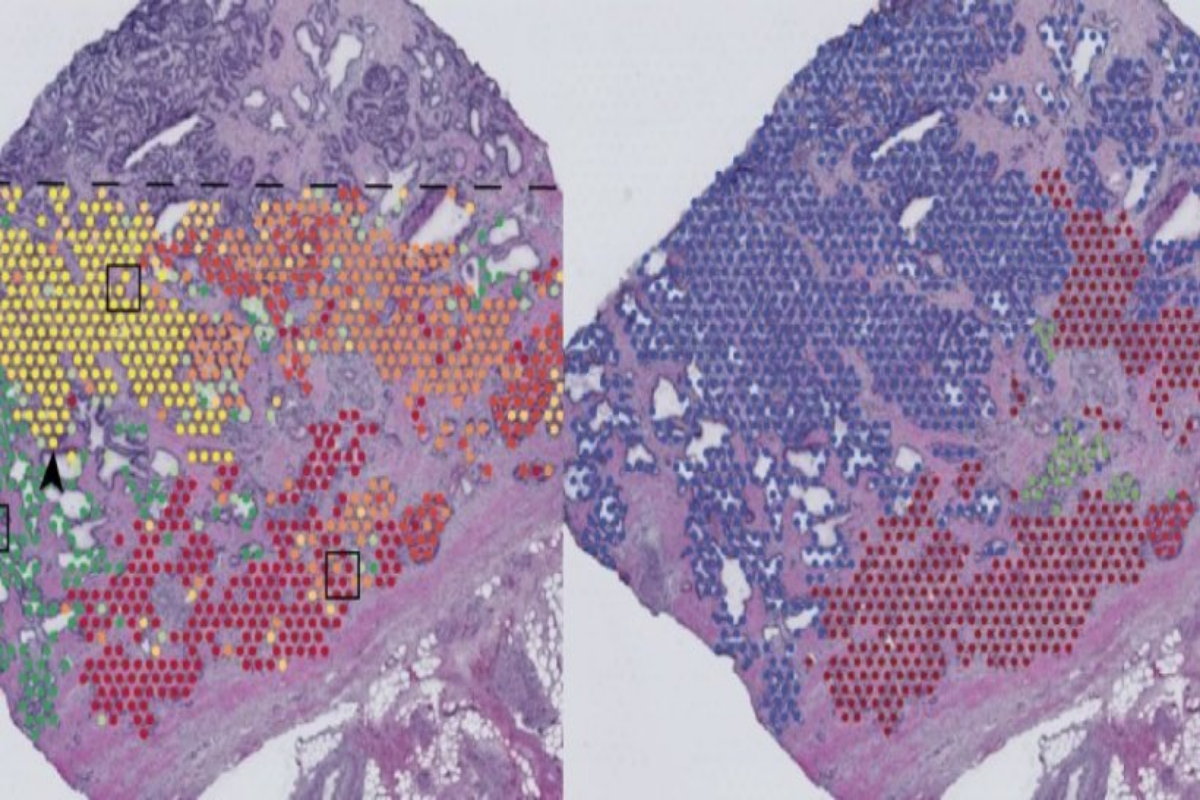- Researchers have produced a map of the prostrate that highlights healthy and malignant tissue.
- Their approach has the potential to significantly enhance early cancer diagnosis.
- Researchers examined 150,000 locations in two breast tumors, a lymph node, some skin, some brain tissue, and three prostrates.
For many years, researchers from all around the world have worked to better understand cancer, one of the deadliest diseases in the world.
Researchers have been attempting to understand the origins of cancer and what early therapies can be used to combat the disease.
Researchers have now produced a map of the prostrate that highlights healthy and malignant tissue.
Prostate tumors exhibit an unidentified spectrum of genetic variation, according to specialists from the University of Oxford, the Karolinska Institutet in Solna, Sweden, and the KTH Royal Institute of Technology’s Science for Life Laboratory.
Using spatial transcriptomics, the team was able to observe the genetic alterations that occur in the tissue. Their approach has the potential to significantly enhance early cancer diagnosis.
According to a study that appeared in the journal Nature, this method was superior to prior ones because they only examined the DNA of cells from tumors and took samples from malignant areas.
According to researchers, prostate cancer and other cancers of similar nature are three-dimensional, and any one sample should point to a tumor.
Alastair Lamb, the study’s principal investigator, stated that they were “pretty positive” that cancer was brought on by genetic abnormalities. According to Lamb, there has never been this much clarity before.
The genetic makeup of cancer was found in healthy tissues as well, surprising the scientists.
To create an algorithm that could monitor cells with similar genetic traits, researchers examined 150,000 locations in two breast tumors, a lymph node, some skin, some brain tissue, and three prostrates in their extensive investigation.
According to Professor Joakim Lundeberg of the KTH Royal Institute of Technology, “mapping thousands of tissue patches in a single experiment is an unparalleled way to deconvolute the heterogeneity of tumors and their microenvironment.”
According to him, high-resolution views can alter how we perceive the cancer ecology.
[embedpost slug=”johnson-johnson-to-quit-producing-cancer-causing-baby-powder/”]

